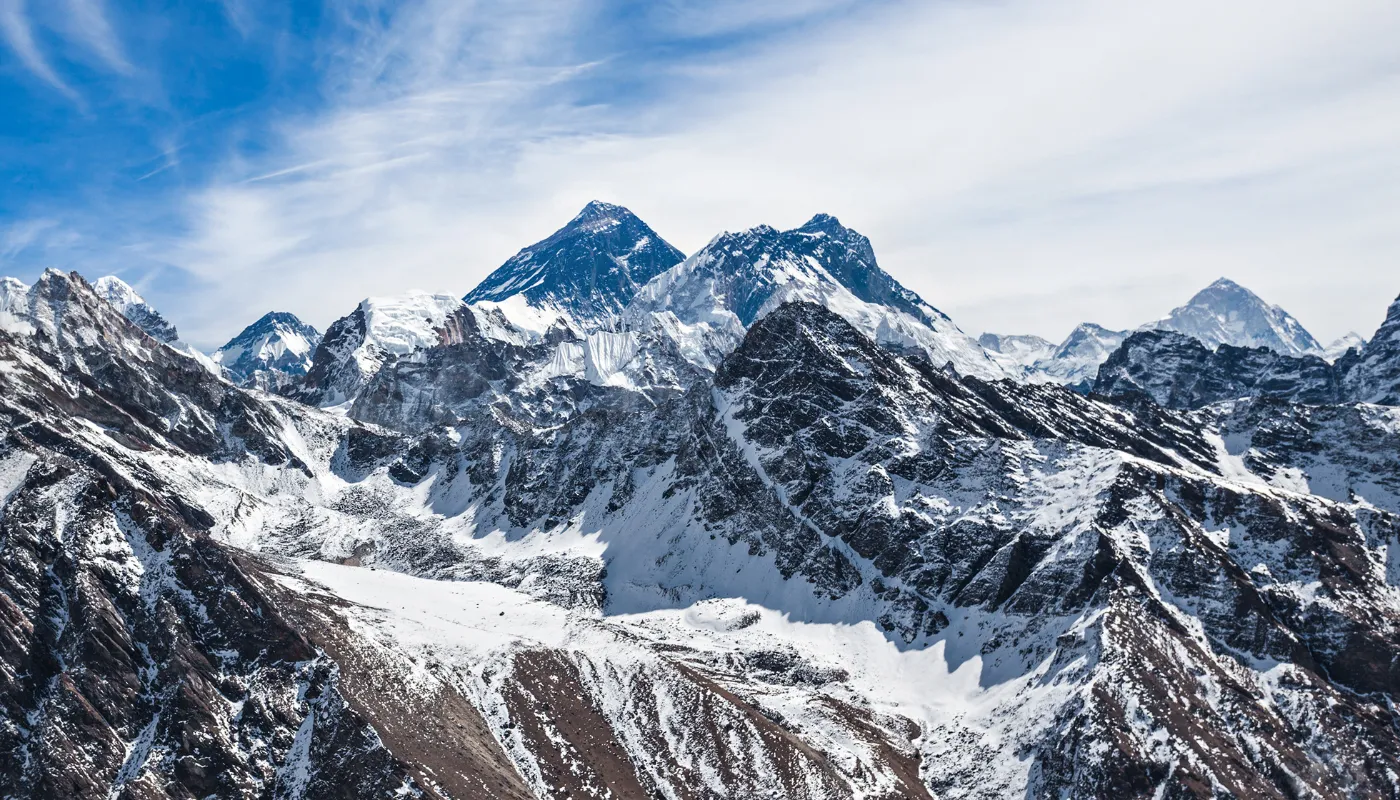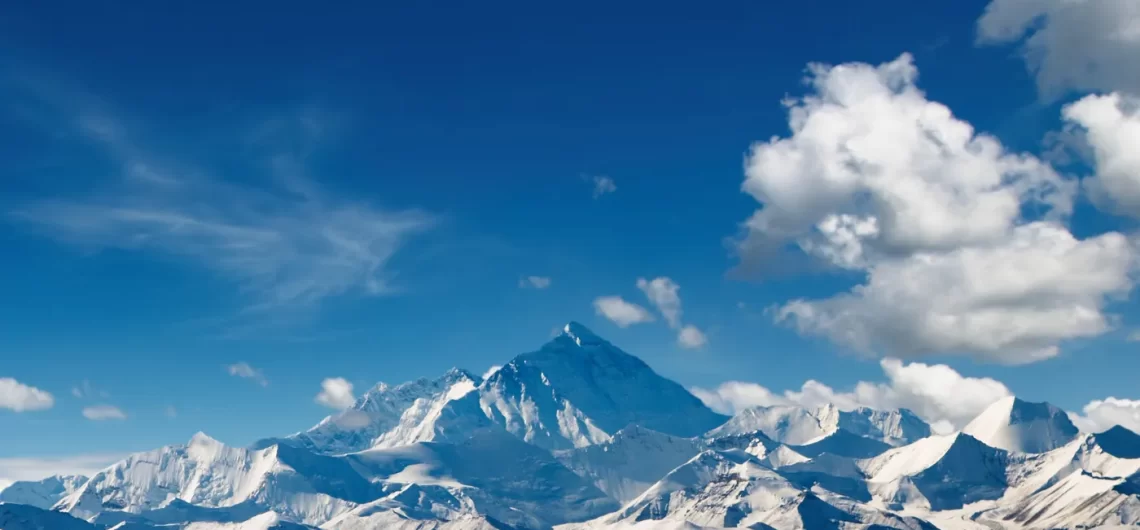The Everest base camp trek is a legendary route, offering a breathtaking view of the majestic Everest. Autumn, with its warm temperatures, clear skies, and vibrant rhododendron blooms, is the perfect season for this adventure. But which month, October or November, offers the best conditions for your trek?
October is known for warmer temperatures, clear skies, and vibrant rhododendron blooms, which create a lively atmosphere. November gives us the opportunity to experience tranquility amidst the changing landscape as temperatures cool and snow begins to dust the peaks.

Stay with us until the end as we discuss in detail the comparison of October and November in the Everest base camp.
Weather Conditions in October and November
| Weather Conditions | October | November |
| Weather | Warmer temperatures, clear skies | Cooler temperatures, the possibility of light snow |
| Precipitation | Lower chance of rainfall | Slightly higher chance of rainfall compared to October |
| Visibility | Excellent views of the mountains | Generally good, but occasional clouds may obscure views |
| Crowds | Higher number of trekkers | Fewer trekkers compared to October |

Everest Base Camp in October
Trekking to Everest Base Camp in October offers optimal weather conditions for an unforgettable journey. The October season is described by clear skies and comfortable weather, with excellent visibility of the iconic mountains of the Everest region, including Mount Everest, Lhotse, Nuptse, Ama Dablam, and Thamserku.
October is a dry month with no rain and less humidity. Thus, the possibility of fogging up the view is low. With beautiful blue skies and a warm atmosphere, hiking becomes a joyous experience.
The daytime temperatures range from 12 to 16°C and nighttime temperatures from 5 to -14°C, with an average of 6 to 7 hours of sunshine per day. Unlike the colder winter months, nights in the Everest region are pleasantly mild during October.
Everest Base Camp in Novemeber
As November marks the transition from autumn to winter in Nepal, temperatures in the Everest region begin to drop gradually. While the views are clear, the weather is changing. Daytime temperatures typically range from -10°C to 15°C, while nights become colder.
Despite the cooling temperatures, November days often greet trekkers with sunny weather and clear blue skies. However, it’s essential to note that the weather can be unpredictable in November, with occasional snowfall or blizzards occurring at higher elevations.
As you ascend from Namche to the mountains, the weather may become extreme, increasing the risk of altitude sickness.
What is the trekking experience in October and November?
Both of these seasons are the best times for mild weather conditions. But the fun fact is each month provides different trekking experiences with diverse landscapes.
October:
- Vibrant atmosphere along the trail due to larger crowds.
- More opportunities for socializing with fellow trekkers.
- Availability of various amenities and services along the route.
- You need to book accommodations and permits well in advance.
November:
- Quieter trails allow for a more peaceful trekking experience.
- Chance to enjoy the tranquility and solitude of the Himalayas.
- Some teahouses and facilities may start to close as the season winds down.
- Flexibility in accommodation bookings due to fewer crowds.
How do the landscapes change in these months?
As you make your way to Everest Base Camp, you’re treated to a breathtaking display of changing landscapes. The journey starts between lush greenery and vibrant rhododendron blooms.. As you ascend, the scenery evolves and reveals rugged terrain with alpine forests and cascading waterfalls.
In October, the landscape bursts with colour as the foliage turns shades of red and orange, which contrast beautifully with the snow-capped peaks above. The lively colours of autumn add to the sense of adventure and wonder.
In November, the landscape subtlety shifts as it prepares for winter. The foliage takes on muted tones that show the approach of colder weather. Despite this, the snow-capped peaks remain stunning against the clear blue skies that create captivating scenery of the landscape.
Both months offer their unique beauty, from the colors of October to the serene majesty of November. Whether trekking amidst autumn’s brilliance or winter’s tranquility, adventurers are sure to be enchanted by the Everest region’s ever-changing scenery.
Tips to make Everest Base Camp Trek successful
- Prepare physically: Engage in regular exercise and endurance training to build stamina and strength for the trek.
- Pack wisely: Bring essential gear such as sturdy trekking boots, warm clothing, sunscreen, and a first aid kit.
- Acclimatize properly: Take your time to adjust to the altitude by ascending gradually and staying hydrated.
- Listen to your body: Pay attention to signs of altitude sickness and know when to rest or descend if necessary.
- Hire a guide: Consider hiring a knowledgeable guide to navigate the trail safely and provide valuable insights along the way.
To wrap up, Trekking to Everest Base Camp in October and November offers a fantastic adventure with clear skies and pleasant weather. These months are perfect for enjoying stunning mountain views and vibrant landscapes along the trail. Take time and make your decision according to your requirements.

With Hiking Nepal , you’ll have expert guides and a safe, memorable journey. It’s a great time to experience the beauty of the Himalayas and immerse yourself in Nepalese culture.
FAQS
Is it possible to hike to Everest Base Camp without a guide?
While not mandatory, having a guide is strongly advised for safety and cultural insights.
What is the elevation of Everest Base Camp?
The elevation of Everest Base Camp is 5,364 meters (17,598 feet) on the Khumbu glacier.
How challenging is the Everest Base Camp Trek?
The trek is rated moderate and features rolling terrain and steep ascents. Due to the high altitude, adequate training and acclimatization are crucial.
How long does the Everest Base Camp Trek typically take?
The standard trek from Lukla takes 12-15 days round trip, 7-8 days to reach Base Camp, and 3-4 days to return.
When is the best time to undertake the Everest Base Camp Trek?
Spring (March-May) and Autumn (September-November) are optimal seasons due to favorable weather conditions.
Is the Everest Base Camp Trek worth it?
Many regard the Everest Base Camp trek as a once-in-a-lifetime adventure. The trek offers breathtaking mountain vistas and a thrilling sense of exploration.
Can Mount Everest be seen from Everest Base Camp?
No, the view of Everest is obstructed by surrounding mountains. The top viewpoint is Kala Patthar at 5,545 meters.
Is travel insurance necessary for the Everest Base Camp Trek?
Travel insurance, particularly one covering emergency evacuation, is strongly recommended due to the risk of altitude sickness.
How should one prepare for the Everest Base Camp Trek?
Adequate preparation involves cardiovascular exercise, hiking with a pack, and acclimatization to altitude.

